Deviant Acts
Essays on Queer Performance
Summary
Excerpt
Table Of Contents
- Cover
- Title
- Copyright
- About the book
- This eBook can be cited
- Contents
- Acknowledgements
- List of Illustrations
- 1 | Introduction (David Cregan)
- 2 | Queering Oscar: Versions of Wilde on the Irish Stage and Screen (Eibhear Walshe)
- 3 | The Politics of Camp: Queering Parades, Performance, and the Public in Belfast (Kathryn Conrad)
- 4 | Lesbian Versions of the Female Biography Play: Emma Donoghue’s I Know My Own Heart and Ladies and Gentlemen (Mária Kurdi)
- 5 | Touching, Feeling, Cross-dressing: On the Affectivity of Queer Performance. Or, What Makes Panti Fabulous. (Fintan Walsh)
- 6 | Edward Martyn’s Theatrical Hieratic Homoeroticism (Michael Patrick Lapointe)
- 7 | The International Dublin Gay Theatre Festival (Brian Merriman)
- 8 | Sexuality and the Dysfunctional City: Queering Segregated Space (Niall Rea)
- 9 | Gender as Performance in the Works of Glasshouse Productions, Dublin (Samuele Grassi)
- 10 | Queer Wanderers, Queer Spaces: Dramatic Devices for Re-imagining Ireland (Todd Barry)
- 11 | ‘Crying’ on ‘Pluto’: Queering the ‘Irish Question’ for Global Film Audiences (Charlotte McIvor)
- 12 | Living by the Code: Authority in The Gay Detective (Kathleen A. Heininge)
- 13 | ‘There’s Nothing Queer Here’: The Abbey Theatre and the Problem of Practice (David Cregan)
- Contributors
- Index
- Series index
As the editor of Deviant Acts: Essays on Queer Performance I would like to thank Carysfort Press, in particular Eamonn Jordan, for their encouragement and support during this project. I am most grateful to all of the contributors to this volume for their hard work and dedication. Finally I would like to thank Anna McMullan and Brian Singleton for their encouragement and guidance through my years of research and writing.
Figure 1 Photo: No Talk, No Walk / Re-route the Flute graffiti, Ormeau Road, Belfast, July 1998.
Figure 2 Photo: You Won’t Reroute This Fruit! sign, Pride Parade participant, Belfast, August 2004.
Figure 3 Photo: Belfast Sightseeing Bus with Kremlin gay bar employees and pink, red, and white Union Jack, Belfast Pride, 2006.
Figure 4 Photo: giant rainbow flag, Belfast Pride, 2006.
Figure 5 Photo: drag queen, Belfast Pride, 2006.
Figure 6 Poster for In These Shoes? Courtesy of Niall Sweeney at Pony Ltd., 2007.
Figure 7 Poster for All Dolled Up. Courtesy of Niall Sweeney at Pony Ltd., 2007.
Figure 8 Photo: Panti speaking to the audience during All Dolled Up. Courtesy of Fiona Morgan, 2008.
Figure 9 Photo: Panti’s Make and Do Do Display Cabinet. Courtesy of Rory O’Neill, 2008.
Figure 10 Photo: Tony Flynn (seated) in the 1987 BCT production of Sign on the Dotted Line.
Figure 11 Photo: Early 1980s Hunger Striker mural from the gable wall of a terraced house on the Falls road in West Belfast.
Figure 12 A socialist protest poster that was fly posted around Belfast in the 1970s. ← x | xi →

Figure 1: Photo: No Talk, No Walk/Re-route the Flute graffiti, Ormeau Road, Belfast, July 1998. ← xi | xii →
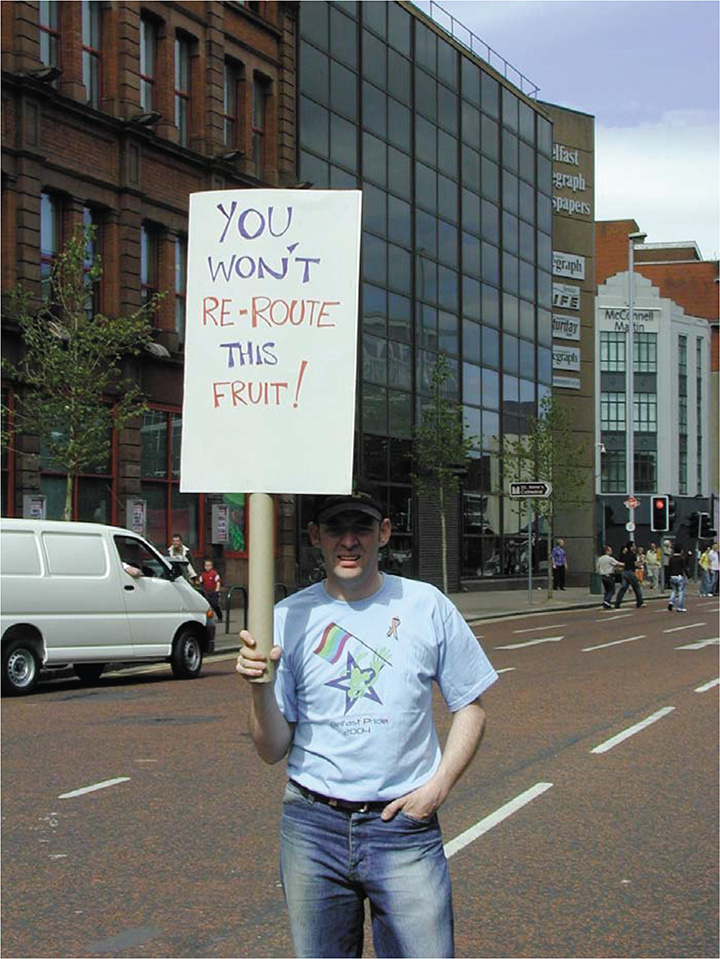
Figure 2: Photo: You Won't Reroute This Fruit! sign, Pride Parade participant, Belfast, August 2004. ← xii | xiii →

Figure 3: Photo: Belfast Sightseeing Bus with Kremlin gay bar employees and pink, red and white Union Jack, Belfast Pride, 2006. ← xiii | xiv →

Figure 4: Photo: Giant rainbow flag, Belfast Pride, 2006. ← xiv | xv →
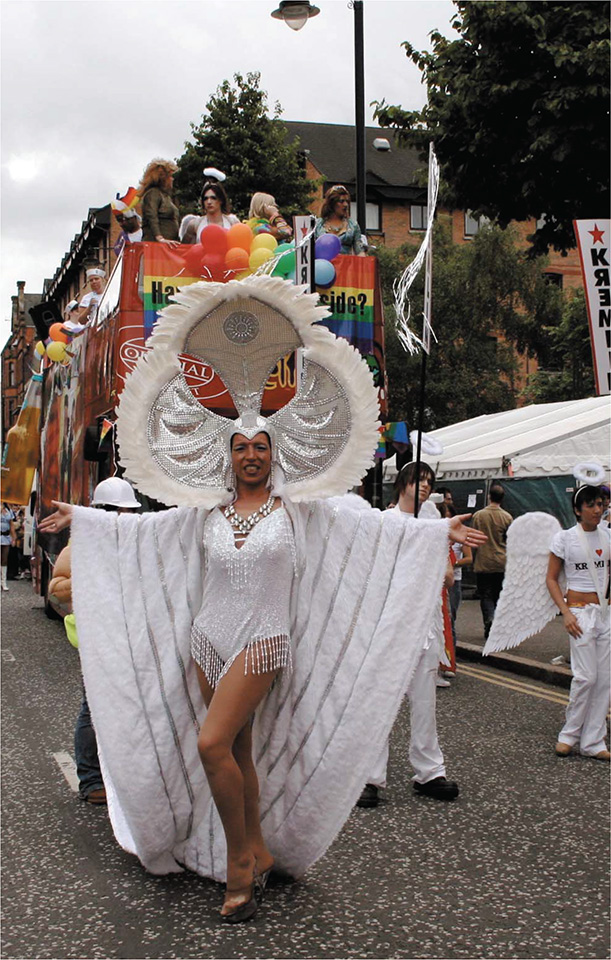
Figure 5: Photo: Drag queen, Belfast Pride, 2006. ← xv | xvi →

Figure 6: Poster for In These Shoes? Courtesy of Niall Sweeney at Pony Ltd., 2007.
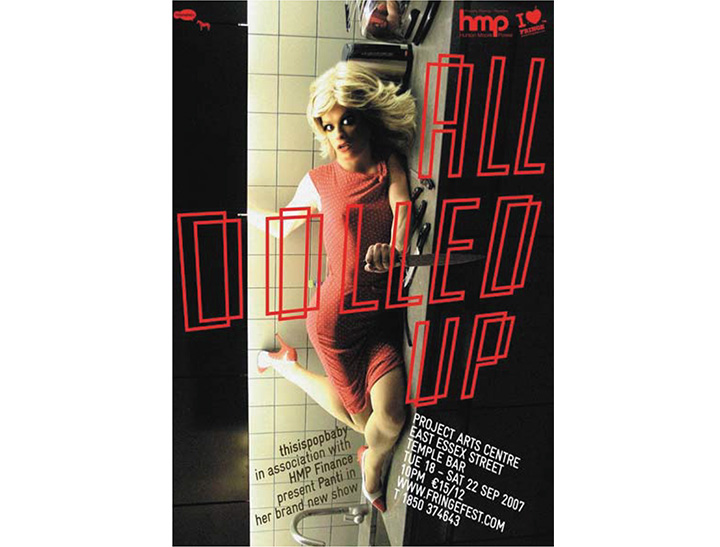
Figure 7: Poster for All Dolled Up. Courtesy of Niall Sweeney at Pony Ltd., 2007. ← xvi | xvii →
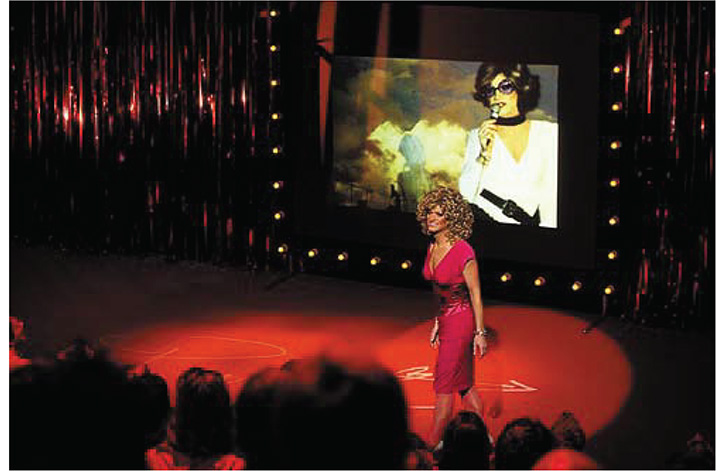
Figure 8: Panti speaking to the audience during All Dolled Up. Courtesy of Fiona Morgan, 2008.
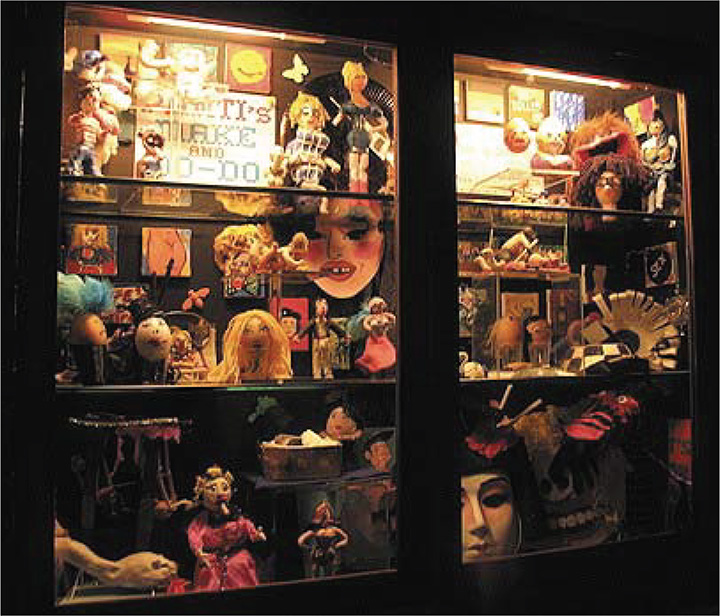
Figure 9: Panti’s Make and Do Do Display Cabinet. Courtesy of Rory O’Neill, 2008. ← xvii | xviii →
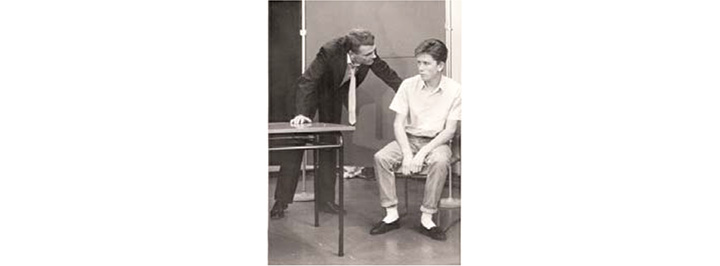
Figure 10: Tony Flynn (seated) in the 1987 BCT production of Sign on the Dotted Line.

Figure 11: Early 1980s Hunger Striker mural from the gable wall of a terraced house on the Falls Road in West Belfast.

Figure 12: A socialist protest poster that was fly posted around Belfast in the 1970s.
In his book The Politics of Irish Drama Nicholas Grene describes the erotic energy of The Playboy of the Western World which served to offend those who did not like what was being implied about Irish character in its representations of Irishness:
As the repressed physicality of the sexual was allowed to appear from under the normal decencies of its covering, so sex was proximate to violence and both made manifest the actuality of a specific location. Again and again distinctions, differences and the ideological labelling that went with them were jumbled in unsorted contiguity. Such contamination of confused categories was a deeply disturbing affront to the middle-class nationalist community whose self-image depended on such moral classification.1
These social protestations against the idea of Irishness as represented on the National Stage indicate an important shift in Irish cultural politics, one that would impact the possibility of the emergence of gay and lesbian identities for decades to come. While early nationalism based its identity project on reconfiguring the negative British imagery of Ireland, post-liberation Ireland began to devolve into its own essentialization of the nature of the ‘true’ Irish citizen, forcing the suppression of alternative life choices and marginalized identities through a civic conversation based on a catholic morality rather than the broad based human rights of an emerging democracy.
These events of moral prudery and aversion to sexuality being theatrically represented, even in its most banal forms, are the ← 1 | 2 → historical antecedents which limited and prohibited Irish playwrights for decades. It is not until 1968 that the Dublin Theatre Festival produces a drama with an openly gay character. Thomas Kilroy’s play The Death and Resurrection of Mr. Roche opened at the Olympia Theatre during the festival and was set in present day 1960s Dublin. At the centre of the play is the character of Kelly. Kelly is a country bachelor renting a basement apartment in Dublin. The action takes place between Saturday evening and Sunday morning, and portrays the weekly routine of a small group of friends who ritually drink the weekend away. Into these late night revelries comes the openly gay character of Mr. Roche, accompanied by a young man. Kilroy uses Roche’s sexuality to articulate the latent sexual anxieties of Kelly. Kelly lashes out at Mr. Roche:
KELLY. Get him away, away to hell. Dirty, filthy pervert. If you don’t do anything about it I am telling you I will. I’m telling you that now. [He exits to bedroom where at first he stands indecisive and nervous. Later he bends to look through and listen at the keyhole or walks about the room.]2
As events unfold Kelly, predictably, admits to a previous homosexual encounter and his own sexual denial. But what is most interesting about this groundbreaking play for gay and lesbian issues in Ireland is its portrayal of the open homosexual character as object. Kilroy certainly represents the social anxieties surrounding homosexual identity in 1960s Ireland, but he does so as object rather than subject. The gay character is the antagonist, the problem, the source of the necessary dramatic conflict; an object of curiosity but nonetheless an object who is defined by the ideas and opinions of others around him rather than through his own articulation of self or experience.
In 1971 Brian Friel introduces a gay character into his own writing in his play The Gentle Island. The play is set on the small island of Inishkeen off the coast of County Donegal in the northwest of Ireland. The inhabitants of the island are emigrating due to fading resources with the exception of Manus Sweeney and his family. When two travelling strangers come to visit this remote island they become entangled in the fear and neurosis of this failing Irish family. Manus’s son Philly becomes involved in a sexual relationship with one of the strangers, Shane, and is caught by his wife Sarah. The sexuality of this family is as dysfunctional as their interpersonal relationships, and Friel uses homosexuality to bring these frailties to a dramatic head. In the end of the play Sarah shoots ← 2 | 3 → and kills Shane. Homosexuality is again a point of conflict, an accusation, and an object of scrutiny in what Nicholas Grene calls ‘the social policing of sexual relationships’3 in Friel’s writing.
Details
- Pages
- X, 248
- Year
- 2009
- ISBN (PDF)
- 9781788748834
- ISBN (ePUB)
- 9781788748841
- ISBN (MOBI)
- 9781788748858
- ISBN (Softcover)
- 9781788748827
- DOI
- 10.3726/b15572
- Language
- English
- Publication date
- 2019 (March)
- Published
- Oxford, Bern, Berlin, Bruxelles, New York, Wien, 2009. X, 248 pp., 8 fig. col.

